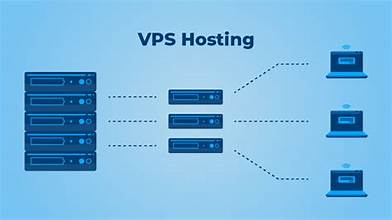Growing a sustainable presence on social media these days feels more like walking a tightrope. One low-performing reel, poorly chosen soundtrack, or algorithm tweak, and your reach drops overnight. A new trendy aesthetic can suddenly make your entire feed feel outdated. Even the top-performing creators are constantly forced to adapt, bend, and conform their content just to stay visible out there.
That’s why having your own website isn’t just a nice-to-have — it’s a must. It’s the one online space you truly control, a safe haven free from the unpredictable whims of platforms and their ever-changing rules. Whether you’re building a brand, showcasing your work, or offering something valuable, your website will remain your reliable digital anchor.
Let’s talk about how to create an effective personal website without investing a small fortune in it. Spoiler alert: you won’t need to code anything, unless you really want to. We’ll also show you ten head-turning personal website examples and break them down, explaining what makes them work.
What is a personal website?
A personal website is a standalone, self-owned online space where you can present your identity, work, expertise, and values. It functions as a digital home base and remains fully under your control.
Create a website that converts
With YISolutions, you can build a stunning single-page or multi-page website for your business and equip it with interactive widgets, engaging contact forms, surveys, and more. Take advantage of our free plan and give it a try!
A personal website is an all-in-one hub where you can:
- Introduce who you are and what you do.
- Showcase your work, achievements, or portfolio.
- Share insights through blog posts, videos, or other media.
- Offer services, products, or ways to get in touch.
- Build a mailing list or lead funnel for long-term engagement.
It helps to think of a personal resource as your brand headquarters, credibility engine, and long-term content archive. The latter one is especially important as the biggest social media apps and streaming platforms are known to remove content overnight without a proper warning, and when decisions are made by opaque AI-driven moderation systems, it’s often difficult, if not downright impossible, to appeal or get a clear reason.
One of the biggest freedoms of owning a personal website is the ability to shape it exactly how you want. You can keep it short and sweet — a clean, focused landing page with your essentials — or build out a rich, multi-page resource with blogs, portfolios, case studies, and more. Most modern website builders allow for customization, which means that you’re not limited by rigid templates, character counts, or themes.
Social media platforms are like rental properties. Surely, you can decorate the space and invite people over, but you don’t own it — the landlord (the platform) has the final say and can change their mind at any moment. In short, it’s convenient, but fragile.
When you have a personal website, you control everything — the design, the content, the experience, and the rules. As long as your content is legal, no one can shadowban it or change how it functions without your consent. Just like owning a home, it may take more effort up front, but it’s a long-term investment that grows in value, builds trust, and offers stability.
Who are personal websites for?
A personal website is more than an advanced version of a business card. It’s your own online kingdom where you get to express yourself freely, both visually and verbally.
Freelancers, speakers, artists, coaches, content creators, and other experts use personal websites to introduce themselves to the world — and to make their knowledge, products, services, and achievements visible to a large audience, who can also become their clientele.
Personal websites often have direct or indirect commercial use and fall into one or several of the following categories:
- portfolio;
- resume;
- store;
- personal brand;
- magazine;
- blog.
The degree of personality you can inject into your website varies. If you want to push your personal brand, you may want to make a strong emphasis on your own career journey or personal growth and describe it in detail. It’ll help your website visitors get to know you better and relate to your path.
On the other hand, a portfolio website usually calls for a more objective, if not abstract, approach. If you want your creative work to be the start of the show, you can easily turn your site into an experiential gallery where formal descriptions come secondary.
Why should you create your personal website?
First things first, let’s establish the benefits of having a personal website.
- It’s an independent resource. Social media accounts are borrowed space. Your website isn’t at the mercy of ephemeral social media trends and algorithms. This allows you to fill it with any type of content as long as it’s SEO- and AEO-friendly.
- It’s a way to control your narrative. Social media encourages quick takes, clickbait strategies, and condensed content pieces. A personal website gives you the space to craft and unfold your story on your terms, without worrying about recommended video length or fleeting trends.
- It implies full control and ownership. You decide where to host your website, which framework to use, and when to update or rebuild it. There’s no algorithm deciding how many internet users are “allowed” to see your content or whether it stays online.
- It helps you build your mailing list. A personal website can easily be transformed from a passive resource into a dynamic connection enabler. By adding a lead capture form to your website, you can grow your audience and nurture it in an automated way.
- It keeps everything in one place. Share different projects, ideas, products, events, blog posts, and merchandise — all under one cohesive brand and URL. This unified hub makes it easier for people to explore who you are and what you offer without bouncing between fragmented platforms.
- It can be turned into a source of passive income. Instead of sending potential clients across multiple apps or links, you can streamline everything. Build trust through testimonials and add a payment form to your website to sell consultations, sessions, audits, and other services or products.
Owning a personal website is as permanent as it gets in terms of digital presence. It can serve as a unified, centralized hub where all your work, links, and content live together, neatly organized and easily accessible.
Essential components of a personal website
The following elements are crucial for creating a strong first impression, regardless of whether you have a single-page website or a multi-page resource. Our simple personal website examples will demonstrate how much impact these seemingly small components can deliver.
Component #1. Clear value statement
Think of it as the ultimate summary of your personal brand and your mission. This short, punchy statement should ideally be placed above the fold in order to hook the new visitors right away.
From it alone, it should be clear what you do and why they should care, helping them decide to stay and explore further. It’s also important to address customers’ pain points early on — the visitors will see that you’re not just talking about yourself but are dedicated to solving their problem.
Component #2. Memorable bio
Once your visitors have developed some interest in your persona, it’s time to solidify that first impression by building connection and trust. Add a personal touch and context by describing your background, profession, and what makes you a unique expert in your niche.
Make sure to balance charisma and professionalism in your bio — the goal here is to come across as both relatable and credible. Your bio should reflect the energy and values people can expect when working with you.
Component #3. Hero image
An “About Me” website can hardly be perceived as such without a strong visual capturing your personality and charisma. Adding a personal photo, no matter how intimidating it might feel at first, will make your site more human and inviting.
It will also prevent confusion by clearly showing visitors who the site belongs to, especially if your name is common or your brand spans multiple platforms. The only case when the hero image should depict inanimate objects is when the look and feel of your work is far more important than your own persona.
In these instances, leading with a bold visual piece can be more effective than a traditional headshot. However, it’s still important to weave in personal elements elsewhere on the page.
Component #4. Featured work
A preview of a few accomplished projects, clients, or achievements gives visitors a quick taste of your credibility or skills right away, without requiring them to dig through subpages.
Depending on your niche, you have a few options:
- portfolio gallery;
- case studies;
- project write-ups;
- in-depth articles;
- embedded videos;
- downloadable content;
- interactive prototypes.
Make sure your work is presented in a format that aligns with how your audience consumes content and makes decisions.
Component #5. Call to action
This personal website element is essential for turning passive visitors into engaged contacts. Without it, your personal website remains nothing more than a pretty picture — nice to look at, but unattainable and therefore forgettable.
Component #6. Social proof
Featured work showcases what you do. Testimonials, in turn, demonstrate how you do it, and this aspect is often what seals the deal.
Most website builders out there are template-based, and their convenience is both a blessing and a curse, tempting you to save time and settle for generic, barely edited layouts. But, with enough inspiration, you’ll easily be able to deeply customize them to authentically express your brand.
The following hand-picked personal website design and copy examples will supply you with creative ideas you didn’t know you needed. No celebrities — just a few outstanding niche experts who poured their souls into creating resonating personal pages.
A better option would be to purchase a unique domain name from a domain registrar — it will reinforce your personal brand and make your site appear more trustworthy.
If you have products showcased on your personal site along with the integrated checkout, you can already set up your online store from the same website settings menu. This includes specifying your currency and delivery options.
Get Your Own Business Website on Monthly Subscription Basis
Need assistance? Connect with our Expert instantly via WhatsApp @ +92 313-325 8907




